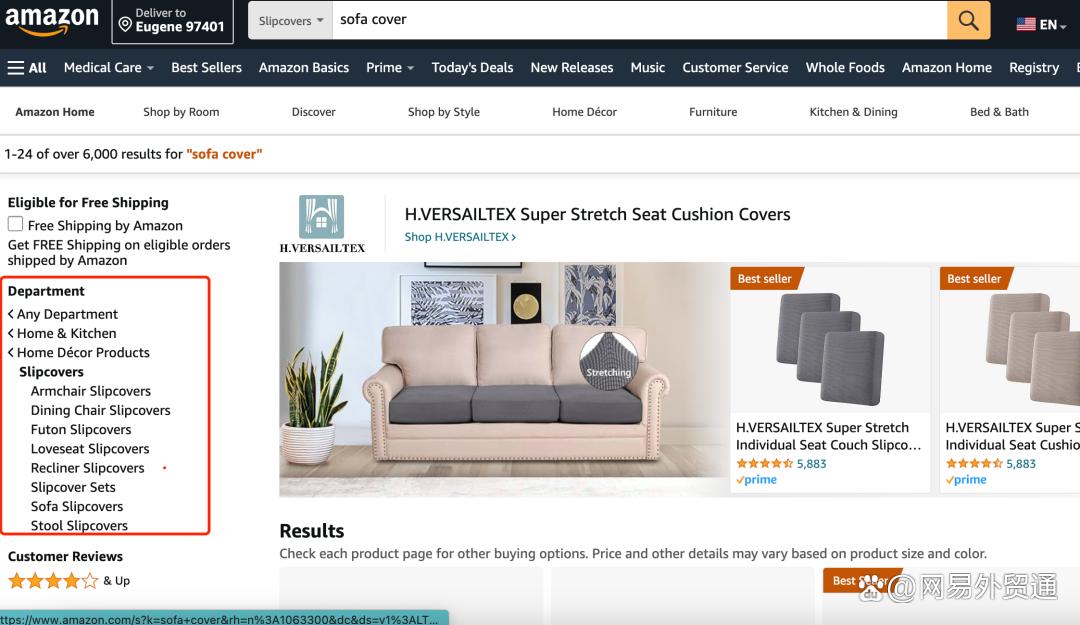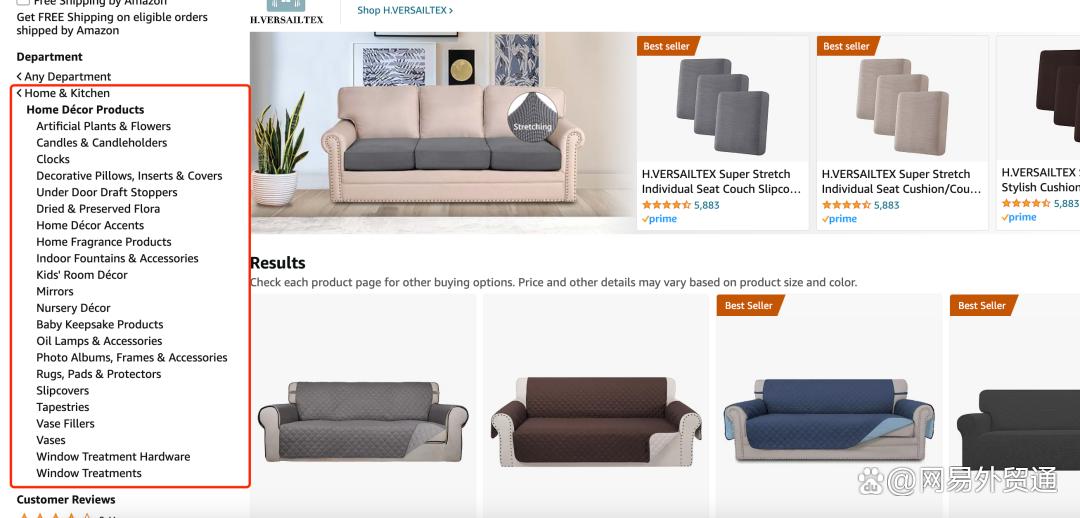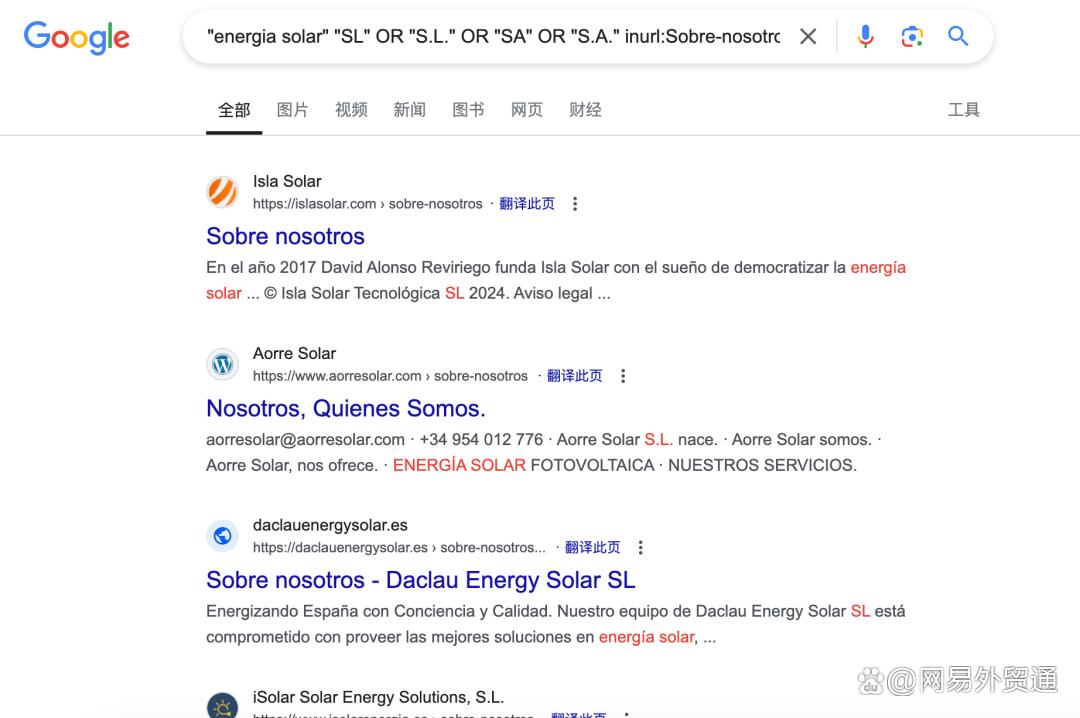Using Google+LinkedIn to find foreign trade customers, does the city matter?
Created on 2024.11.12
All foreign trade people know that finding customers on LinkedIn is very accurate and fast.
If we combine Google and LinkedIn to find clients, will it have a synergistic effect like adding wings to a tiger? Let's take a look together!

Products
Product Hierarchy
When searching for products, try to search for larger categories. For example, if we want to find buyers of sofa covers, it is difficult to find buyers of sofa covers accurately on LinkedIn. Hardly anyone will list such a small category of products on their profile, so we need to look for larger categories.

We can find the category that belongs to our product through Amazon. After entering our product, find the corresponding category in the Department next to it. Click on the category again, and you can see more similar category products.

Searching on LinkedIn with the names of these major product categories will help you find more relevant contacts.
2. Strongly related products
We also highly recommend everyone to check out related products. For example, sellers of electric bicycles usually also sell electric scooters, sellers of drones are very likely to sell action cameras, and sellers of cameras are very likely to sell microphones. So we need to constantly discover and summarize, and find these strongly related products.
Industry
A product is likely to be applied in multiple different industries, and we need to find the application scenarios and different names of our product in different industries. In addition, we also need to open up our thinking to see if our product can be used for other application scenarios and purposes after simple modifications, greatly expanding our customer base.
Company
When we look at it from the company's perspective, we need to observe which link in the supply chain the company is located. Products go through a long supply chain from raw materials to the hands of consumers: wholesaler, retailer, brand, supplier, provider, chain stores, dealer, repairer, so it is necessary to first determine the company's positioning.
Secondly, we need to observe the characteristics of the company's name. For example, companies selling bicycles usually include cycles, bikes, bicycles, mobility, etc. Companies selling machinery usually have machinery, industrial.
Finally, we need to observe the suffix of the company. For example, in the United States, it is often LLC, INC, etc., in China it is Co, Ltd, in Germany it is GmbH, AG (listed company), in Spain it is SA or SL.
Four, Location
Once we know the country's positioning, we can then determine the geographical location of the country. We can directly write the country name, or state, province, important city names, and postal code features to focus more precisely on the geographical location.
Five, Language
We also need to consider the language of specific countries and the different names of products. Some customers have their LinkedIn profiles written in their native language, so when we search, we can also try using the language of the target country to avoid missing out. Of course, we cannot simply use Google Translate for product translations, as the names may vary in different countries.
Six, Webpage
We need to summarize and generalize the high-frequency common characteristic words of the target client companies' websites, which can expand our search keyword database and provide more combinations when searching.
Google search example
When searching on Google, we can refer to this formula using the example of the solar energy industry.
distributor OR supplier OR provider OR importer "solar" OR "renewable energy" INC OR LLC OR Corp. inurl:about

"solar energy" "SL" OR "S.L." OR "SA" OR "S.A."

Contact
Leave your information and we will contact you.
Helen is✎Online!
Helen's ✎ Wechat